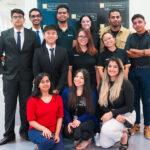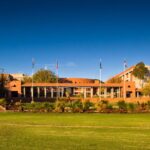In an office in Curtin University’s School of Design and Art, a man in a dark sweater and fedora is talking to me. He seems normal enough until he pushes back his sleeve.
The man is Stelarc, internationally renowned performance artist, and professor at Curtin University. What catches my eye is the ear implanted under the skin of his left arm.
It took ten years to get to this point and it will take another five before the ear gets a flap, an earlobe and a microchip and microphone. This means that wherever Stelarc may be, you can log on online and listen to what the ear can pick up.
Sounds strange? It isn’t. Stelarc’s philosophy is that technology extends the body’s physical abilities, allowing us to do what we previously could not due to our physical limitations.
“Technology isn’t an artefact but an extension of the body,” Professor Stelarc says.
On his bookshelf are books by Marshall McLuhan, the media theorist and V.S. Ramachandran, the neuroscientist. Professor Stelarc’s work isn’t just to shock – what we can and cannot do with the body has real life applications in science and medicine.
His current project is the Ambidextrous Arm, a bionic arm that is both right handed and left handed. If successful, it could be a tool used to help patients with phantom limbs whose brains tell them that they have limbs that they do not, and that they are in pain. Prosthetics aside, he is also interested in virtual reality and the concept of bodies in virtual space.
What could we do with artificially or virtually constructed bodies to help those who are aging or disabled to interact with others and their world far more easily? Or to extend our experience of it?
“What if someone who had muscle atrophy in their arm could wear a light exoskeleton that could help them move?” he asks. “There are artificial hearts that are smaller than the current ones and have turbines. They don’t produce a pulse but they pump blood around the body – we are questioning what is alive and what is dead.”
How did Stelarc get started on this rather odd path merging art and science?
“I found out I was a bad painter in art school,” he jokes. “I began to perform rather than paint and was always interested in the evolutionary architecture of the human body.” As he points out, how we are structured does determine how we think about and interact with the world around us.
“Art is a happy messy accident,” he says. “I never know what I am going to end up with but I want to work with things that I can actualise and experience.”
The messy art/science/research process will continue when he starts running a lab for Curtin University, carrying out and supervising research on the concept of the body and collaborating with researchers working in engineering, the health sciences and media.
Messy or not, undefinable or otherwise, Stelarc is a performing artist whose work may help others perform when they cannot.



